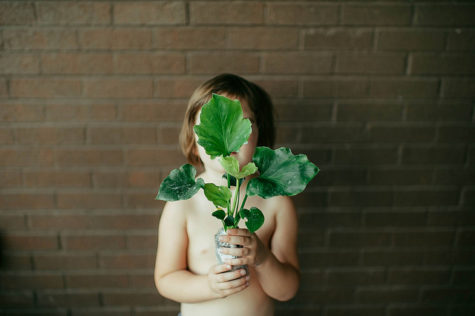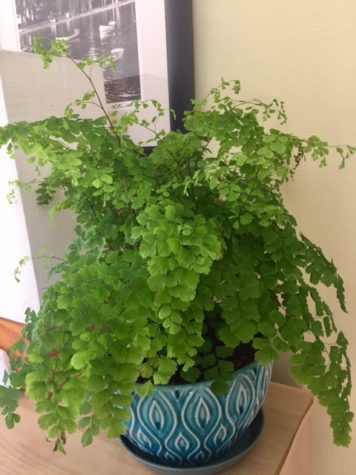 I’m in love with a houseplant. It’s a maidenhair fern, its frilly little leaves dangling from willowy stems. There’s something about it that just makes me incredibly happy. It’s true, my heart even flutters a bit when I see it.
I’m in love with a houseplant. It’s a maidenhair fern, its frilly little leaves dangling from willowy stems. There’s something about it that just makes me incredibly happy. It’s true, my heart even flutters a bit when I see it.
This is my first adult relationship with a houseplant. As a kid, we had plants all over our house, but I thought they were weird. The plants got aphids, my dad would squirt them with a soapy spray bottle. They smelled like soggy dirt—soggy inside dirt, which is totally different than soggy outside dirt. We also had an annual infestation of carpenter ants, which I associated with the plants.
I may not have been wrong—the ants feed on other insects and sugary things, including the honeydew that aphids and other houseplant-dwelling insects produce. Honeydew is sweet, sweet bug poop.
Even once we were in a new house, without carpenter ants, the houseplants returned. My dad couldn’t help planting the small plantlets that his spider plants produced, and kept taking cuttings of his jade plants to propagate them. Soon, the small greenhouse was filled with pots, and plants.
In any case, when I left home, I left behind houseplants, and any desire to have one. A garden, sure, because it’s outside and it gives you things to eat and pretty things to look at. But inside, I already had to make sure I was fed and watered, and soon, there were even more living things, kingdom Animalia, to tend. Cut flowers, a Christmas tree were fine, because they had a finite end. But living plants seemed meant to be outside.
Who were the first people to disagree with this? It’s not certain where the first houseplants started, but the tradition has gone on for a while. In ruins in places including China, India, and Iraq, there are pictures of potted plants. Ancient Egyptians grew plants inside their homes in terra cotta pots; in Rome and Greece, plants lined rooftops and inner courtyards.
Indoor plant-growing began to thrive when glasshouses were built in the 1600s to shelter plants that European explorers “discovered” on their travels. Then, the Victorians took the houseplant to the next level—the combination of indoor heating and larger windows made the home a friendlier place for plants. One of their favorites was the maidenhair fern. (This writer says she likes it because it looks like her hair in the morning—maybe that’s one reason I like it, too.)

Now, people are encouraging indoor plants because of the benefits they bring to the hand that waters them. A preliminary study by researchers from the State University of New York found that bromeliads and spider plants do well at absorbing volatile organic compounds, which can cause health problems including headaches, allergic reactions, and fatigue, as well as chronic problems with long-term exposure. However, a review of similar studies suggests that there is little concrete evidence at how successfully indoor plants do this in an actual house.
I admit, I got caught up in some of this—the reason I started looking at houseplants in the first place was that my friend swore that she’d been sleeping better since she added a set of “sleep-inducing” houseplants to her bedside table. Intrigued, I dutifully went to the garden store and bought several of the recommended plants: ivy, lavender, even one called “mother-in-law’s tongue.” I also spotted the maidenhair fern. I’d seen the same species on a recent hike, growing out of a rock wall next to a flowing creek. I couldn’t help myself: I bought it. (Maybe I’m coming down with what my dad had.)
I can’t say that I’ve been sleeping better. The night before last, I tossed and turned as I tried to think of what to write about houseplants. But when I woke up, I saw my fern across the messy room. Every time I see it, I remember the sound of rushing water, the sunlight through the trees. So it’s doing something for me. And I’ve found inside dirt doesn’t smell that bad after all.
**
Image: Amanda Tipton via Flickr/Creative Commons license